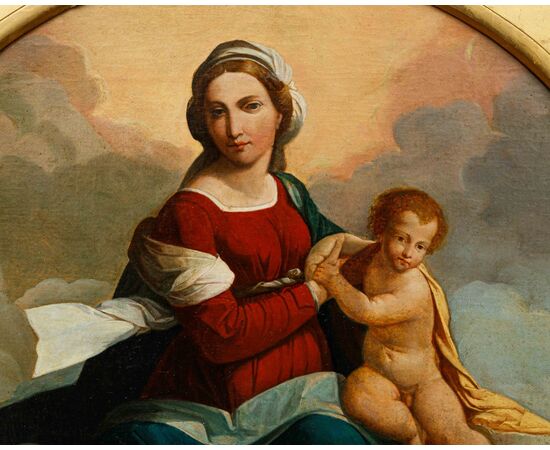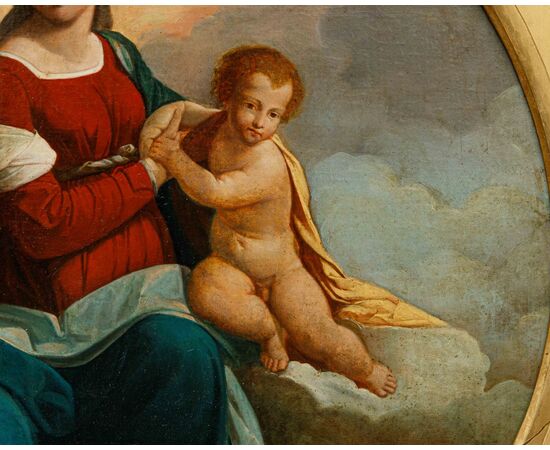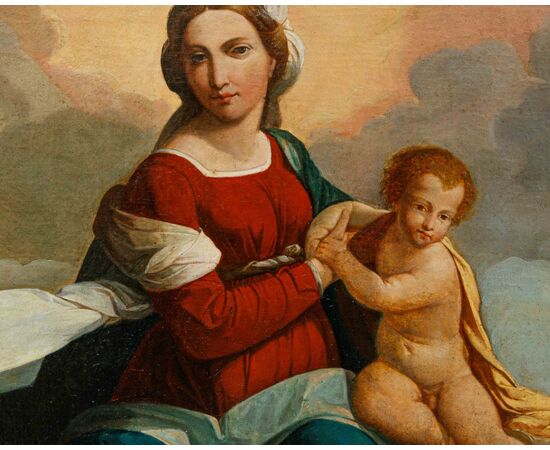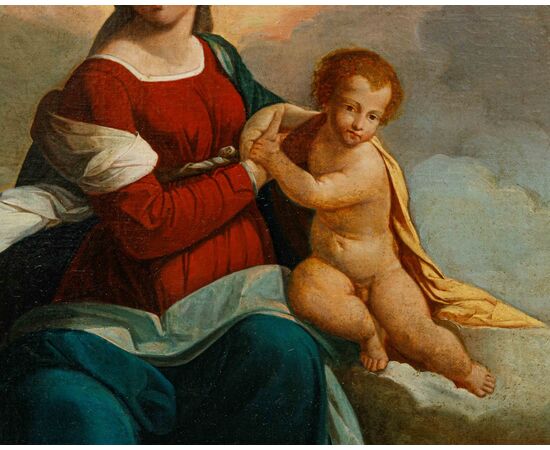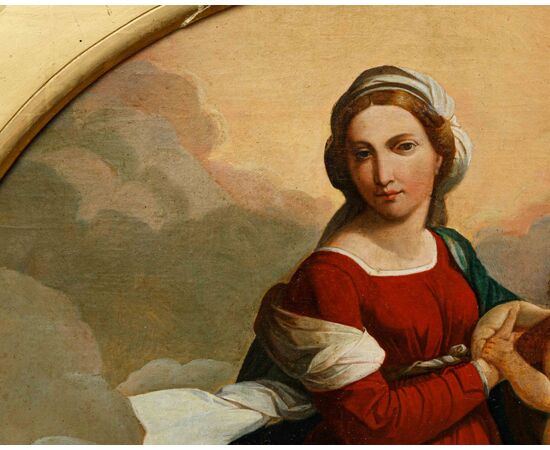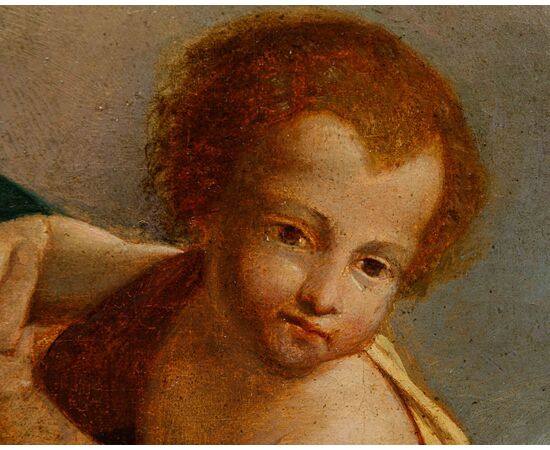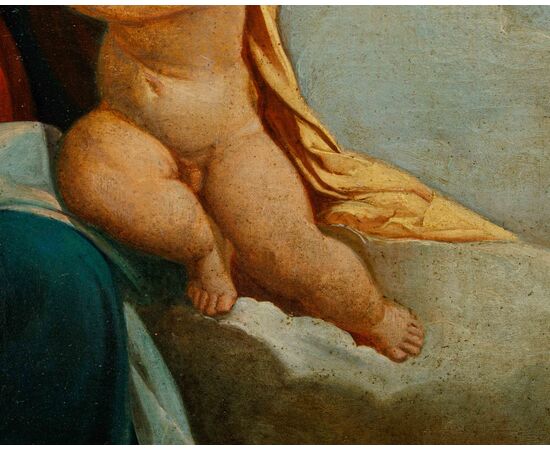19th century, after Benvenuto Tisi da Garofalo, known as Il Garofalo (Canaro or Garofalo, 1476 or 1481 – Ferrara, 1559), Madonna in glory with Child
19th century, from Benvenuto Tisi da Garofalo, known as Il Garofalo (Canaro or Garofalo, 1476 or 1481 – Ferrara, 1559) Madonna in glory with Child Oil on canvas, 82 x 80 cm With frame, 92 x 92 cm The work, datable to around the mid-nineteenth century, is a brilliant reinterpretation of the iconographic styles of one of Benvenuto Tisi, known as Il Garofalo's, masterpieces, the Madonna with Child in Glory from the Capitoline Museums. Garofalo's work, attributable to the mature phase of his production – clear influences related to the Raphael-esque and, in general, Roman visual culture are perceived – can be dated to around 1525. It features the Virgin with the Divine Child surrounded by a choir of musical angels: at the foot of the Madonna, suspended on a soft blanket of clouds with a light pinkish undertone, in Tisi's sixteenth-century painting, a landscape of great charm opens up, within which the presence of a pair of friars is recorded. The artist who, in the nineteenth century, deals with the reinterpretation of this subject chooses to focus solely on the rendering of the central group, the one with the Virgin and Jesus Child: in this way, the intimate dimension of the image is emphasized, placing the emphasis on the sweetness and depth of the relationship between mother and son. In the nineteenth century, a great interest awakens on the part of artists and scholars in the painting of the Ferrarese Renaissance: many are the authors who look with interest at the paintings of Mazzolino, Dosso Dossi, Ortolano and Garofalo; among these is Tommaso Minardi from Faenza (Faenza, 1787 - Rome, 1871), an artist who during the first years of his stay in Rome created some studies and oil paintings taken from the famous works of the masters of the Ferrarese Renaissance exhibited in the museums and churches of the Eternal City. Born in Veneto, probably between Carnaro and Garofalo, near Rovigo, it seems that Tisi was an apprentice of Domenico Panetti starting in 1491. In 1495 he worked in Cremona under the direction of Boccaccio Boccaccino, who introduced him to the Venetian chromatic style, which became a key element in the early paintings of his pictorial corpus. In 1500 he made his first trip to Rome, in a period when it was common practice for northern Italian artists to make a formative trip to the Eternal City. In 1501 he moved to Bologna where he remained for two years at the workshop of Lorenzo Costa the Elder, a painter of great notoriety who worked in service of the Este and Gonzaga families. In 1504 he returned to Ferrara and worked with the Dossi brothers. Between 1503 and 1506 he received various particularly significant artistic commissions in the Ferrarese area: for example, he frescoed the ceiling of the Treasure Room in the Palazzo Costabili in Ferrara, inspired by Mantegna's Camera degli Sposi. In 1512 he made his second trip to Rome, at the invitation of his fellow citizen Girolamo Sacrati, to the court of Pope Julius II, where he met Raphael. This encounter influenced his style, which transformed from Lombard to classicizing and close to the influences of Sanzio and Giulio Romano. Around 1512 he returned again to Ferrara where he worked on numerous works for Duke Alfonso d'Este. Between the 1920s and 1940s, Tisi dedicated himself to various commissions for the Este family and to the creation of numerous altarpieces for the city of Ferrara. Benvenuto Tisi died in 1559 and was buried in the Ferrarese basilica of Santa Maria in Vado in the burial place he had built some years earlier next to that of his wife, who had died previously. In 1829 his remains were transferred to the Certosa cemetery in Ferrara, where in 1841 a monument was dedicated to him in the Cell of Illustrious Men, the work of the sculptor Angelo Conti.


